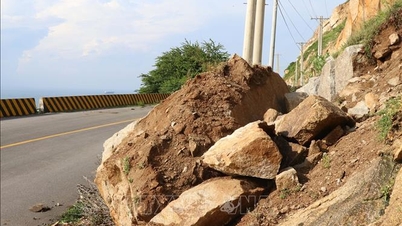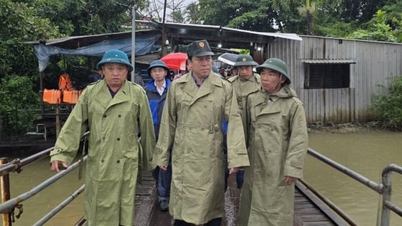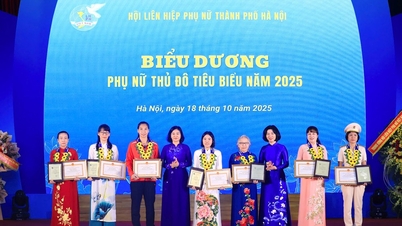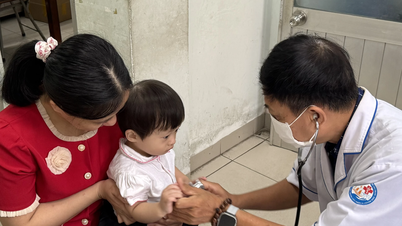
Khanh Hoa is currently creating a large-scale and seamless "Champa Heritage Route", turning this land into the leading Cham heritage center in Vietnam. This heritage axis has connected two national relic complexes of great value: Po Nagar Tower (a model of the Vietnamese-Cham Mother Goddess worship culture in the North) and Po Klong Garai Tower (an important symbol of Brahmanism in the South).
This unification is not only limited to geographical scope but also a process of fully integrating heritage values. It is the intersection and blending of tangible cultural heritage (such as architecture, sculpture) and unique intangible cultural heritage, creating a profound cultural harmony of the Kinh, Raglai, Cham ethnic groups... living together in the same area.
From single point to deep chain of experiences
Coming to Khanh Hoa province today, people and tourists are witnessing changes in economy , culture, society and life. The province has expanded in size, has great potential for breakthroughs and is full of aspirations. It is worth mentioning that after the merger, many relics have been 'awakened', restored and renovated to exploit and welcome tourists.

In the Southern Khanh Hoa region, relics including Po Klong Garai Tower, Po Rome Tower, Hoa Lai Tower are being cared for, renovated, decorated with lights... The number of tourists coming here (especially international tourists) is increasing. Particularly, Po Nagar Tower in the North of Khanh Hoa welcomes thousands of tourists every day.
Talking to Van Hoa reporter, Mr. Tran Duc Ha, Director of Khanh Hoa Province Cultural Heritage Conservation Center shared: Khanh Hoa is currently a center of heritage rich in resources, diverse and unique. The province owns 257 ranked cultural heritages.
“The highlights in the province's heritage treasure are 03 UNESCO-recognized intangible cultural heritages (including the art of Southern amateur music, traditional pottery making of the Cham people, and the art of calling and singing Bai Choi) along with 3 special national monuments (Po Nagar Tower, Po Klong Garai Tower and Hoa Lai Tower)”, Mr. Tran Duc Ha happily said.


Besides, the province also owns 33 National Monuments, including 5 precious National Treasures being preserved (Khanh Son Lithophone Collection, Hoa Lai Stele, King Po Rome Relief, Phuoc Thien Stele, King Po Klong Garai Statue).
Talking about the role of cultural heritage in today's life, Associate Professor, Dr. Tran Duc Cuong, Chairman of the Vietnam Historical Science Association, said that historical relics (Cham temples and towers) are not simply tourist attractions but need to be seen as "history classrooms" and "cultural spaces". This is the place to educate the younger generation about national traditions.
“Therefore, turning relics into “living heritage” is not only a conservation responsibility, but also a sustainable development strategy of the locality. This will contribute to enriching the cultural identity and strongly promoting the socio-economic development of Khanh Hoa province,” Associate Professor, Dr. Tran Duc Cuong affirmed.

Mr. Nguyen Anh Vu, Chairman of Ninh Thuan Tourism Association, Khanh Hoa province, said: Cham tower relics are a solid foundation for creating and developing unique spiritual cultural tourism products. He said that the merger of Ninh Thuan and Khanh Hoa provinces has created a clear transformation, turning the tourist journey from visiting single points into a series of experiences throughout Cham history and beliefs.
Tourists coming here not only admire the thousand-year-old architecture, but also have the opportunity to immerse themselves in the fascinating cultural diversity: from the solemn intersection of the Po Nagar Tower Festival to the originality of the Kate Festival. Tourists can also visit traditional craft villages such as Bau Truc Pottery, My Nghiep Brocade Weaving, along with enjoying the culinary quintessence and unique Cham performing arts.

This connection has opened up an unprecedented opportunity for development, with the formation of a large-scale and seamless "Champa Heritage Route".
Synchronous and sustainable exploitation strategy
To maximize the value of cultural heritage, many tourism and cultural experts believe that Khanh Hoa needs to implement a synchronous exploitation strategy. The focus is on building a common "Cham Culture Week" organized alternately or simultaneously, directly connecting solemn rituals at the ancient tower with profound experiential activities in the community, thereby extending the length of stay and increasing attractiveness.

Analyzing this more specifically, Mr. Tran Minh Duc, Head of Khanh Hoa Province Tourism Association, proposed designing a 3-4 day heritage tour route. This is a journey from Nha Trang (resort, Po Nagar Tower) to Ninh Thuan (Po Klong Garai Tower, craft villages, vineyards). This route integrates diversely between sea tourism, history (Dien Khanh Citadel), community culture and research tourism...
At the same time, it is necessary to prioritize exploiting school tourism products and research experiences through field activities, comparing Cham architecture and local history, creating experiences with high educational value.
Mr. Tran Minh Duc emphasized: "This overall strategy not only attracts research tourists and prolongs their stay, but also creates a sustainable source of income, encouraging local communities, especially the Cham people, to actively participate in preserving and promoting their ancestral cultural identity right in community life."

From another perspective, Mr. Nguyen Phi Hong Nguyen (Nha Trang - Khanh Hoa Tourism Association) highlighted the strategic importance of clearly positioning destinations, especially the province's cultural heritages, to promote connectivity in tourism tours.
He explained that after the merger, Khanh Hoa's geographical scale has expanded significantly, containing countless unique tourist attractions. Therefore, providing detailed and complete information about these destinations for both tourists and businesses is a prerequisite step to creating convenient, attractive and highly experiential linked tourism itineraries.
Meanwhile, Dr. Nguyen Ho Phong (Ho Chi Minh City University of Culture) presented a new perspective, emphasizing the central role of the community in preserving and promoting cultural heritage associated with tourism development.


He proposed breakthrough solutions such as building a co-management model, creating cultural tourism products, applying digital technology and establishing a transparent benefit-sharing mechanism.
(To be continued)
Source: https://baovanhoa.vn/van-hoa/bai-1-kien-tao-cung-duong-di-san-cham-pa-180600.html




![[Photo] Chu Noodles - the essence of rice and sunshine](https://vphoto.vietnam.vn/thumb/1200x675/vietnam/resource/IMAGE/2025/11/11/1762846220477_ndo_tl_7-jpg.webp)

![[Photo] Prime Minister Pham Minh Chinh chairs a meeting on housing policy and the real estate market.](https://vphoto.vietnam.vn/thumb/1200x675/vietnam/resource/IMAGE/2025/11/11/1762838719858_dsc-2107-jpg.webp)































































































![Dong Nai OCOP transformation: [Article 4] Reaching national standard products](https://vphoto.vietnam.vn/thumb/402x226/vietnam/resource/IMAGE/2025/11/11/1762825820379_4702-cac-san-pham-trai-cay-chung-nhan-ocop-nongnghiep-174649.jpeg)


![Dong Nai OCOP transition: [Article 3] Linking tourism with OCOP product consumption](https://vphoto.vietnam.vn/thumb/402x226/vietnam/resource/IMAGE/2025/11/10/1762739199309_1324-2740-7_n-162543_981.jpeg)






Comment (0)